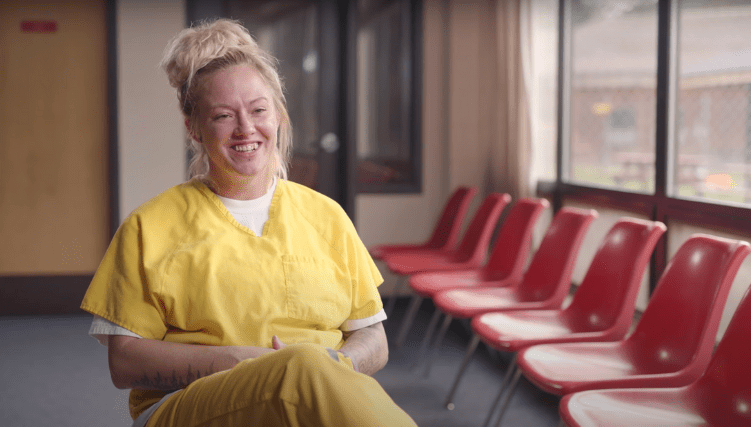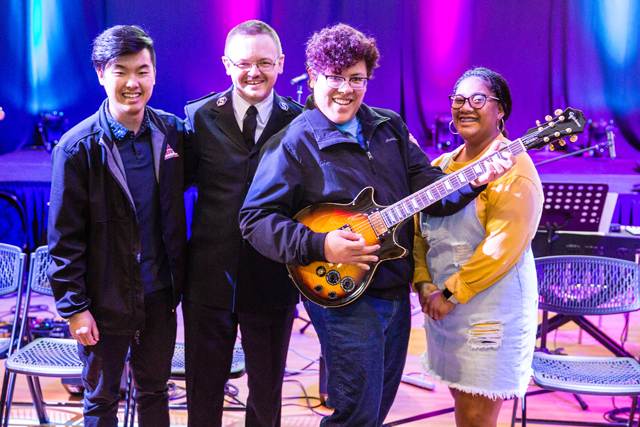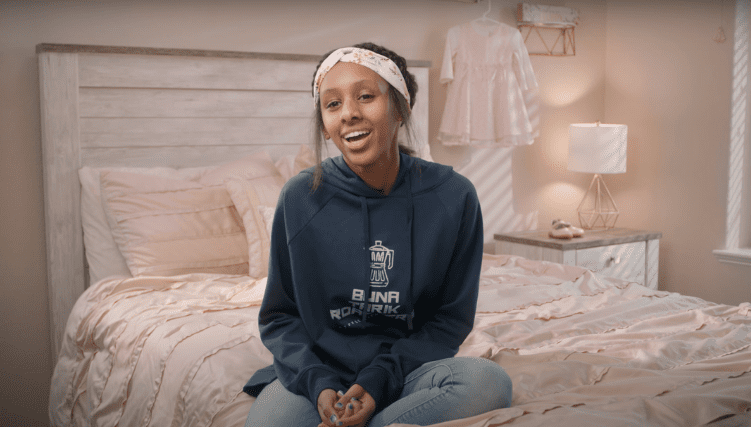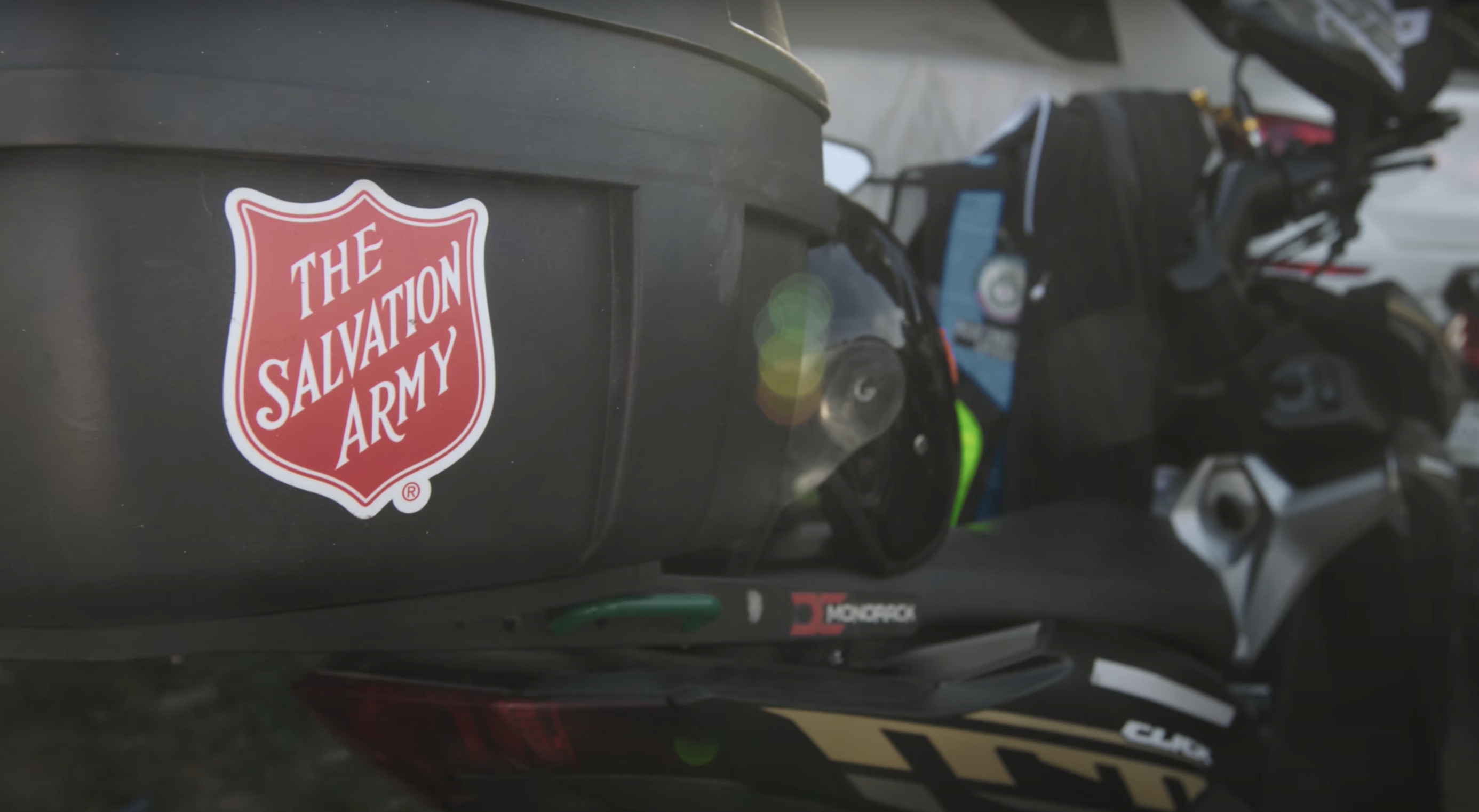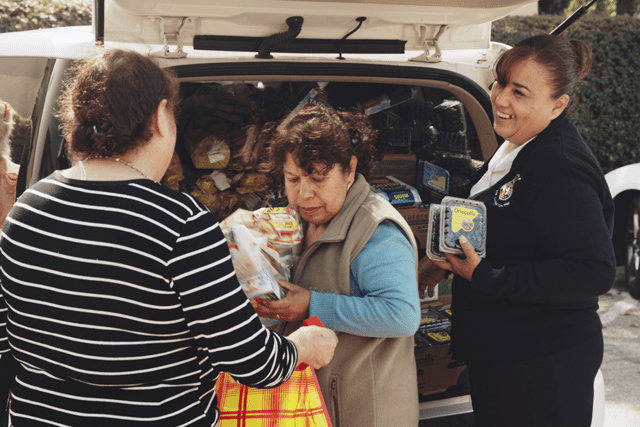There is a movement underway inside of Alaska’s State Penitentiaries. It’s based upon a philosophy which focuses on treatment, teaching, and self-determination, looking beyond punishment to help prepare inmates for their eventual return to society. As part of this effort, in 2017, the Alaska Department of Corrections contracted The Salvation Army to begin a substance-abuse treatment program inside two of Alaska’s State Penitentiaries. Learn about their unique, cutting-edge approach to treatment in this short documentary.
Read the transcript of the video here:
Adam Rutherford, M.ED.: Folks don’t end up incarcerated often because they think, “Well, I’m just going to run out and commit this crime. It’s often because they don’t have the coping skills or the abilities to manage what’s going on in their environment, and that’s what leads to turning to the addiction. That’s what leads to criminal activity.
Lt. Denice Delgado: Alaska is unique in itself. Heroin is rampant. You can just walk the streets, and you’ll see people who are hurting.
Superintendent Earl Hauser: It’s better to rehabilitate someone than it is to just put them out on the street and put them in the same condition they were when we arrived. We, as a department of corrections, is not here to punish. Our job is actually to see that they’re a better individual whenever they actually leave these walls so that they are productive on the outside, so that they are yours and my neighbor.
Adam Rutherford, M.ED.: When you’re looking at the number of mentally ill that are being incarcerated, the number of folks that are struggling with addictions that are being incarcerated, we become the de facto treatment centers, really.
Lt. Delgado: We have programs located in Highland mountain and goose Creek correctional facilities. A lot of it is groups. They have homework and workbooks and trying to change behaviors.
Desiree: We have peer groups. We have classes throughout the day.
Hannah: So they say it’s your thoughts, feelings, and behaviors. So, the thoughts lead to how I feel about myself which led to the behaviors that I have subjected myself to and others.
Catherine: Before, when I first came in, I was so mad that I would jump out of my seat towards somebody.
And now I can sit through a process group and voice my opinion and not get that mad.
Adam Rutherford, M.ED.: The introduction of those cognitive behavioral skills helps folks really think about how your thoughts impact your behaviors. “How do I cope with those emotions so that I don’t have to turn to my addiction.”
Vinnie: Like it doesn’t help us just like try to stay sober, it helps us with like everyday life, you know, gets us study for the streets. It talks a lot about triggers and how to deal with those triggers.
Christopher: I’m becoming a good prisoner, and that’s sad. I don’t want to be a good prisoner. I want to be a good citizen. I want to pay taxes. I want to complain about insurance. Mow the lawn on Saturday mornings, simple things.
Lloyd: You do this program. You get yourself right. Now, you have an opportunity to give back to society, to give back to your families.
Counselor Carrie Eckhart: My role is working in medication-assisted treatment, bringing in Vivitrol as a secondary means of support. Vivitrol is an opioid blocker. It really is one of those things that you can’t manipulate. It helps with the triggers, the cravings. It just is another opportunity for them to have success going in reentry.
Adam Rutherford, M.ED.: Part of having that counselor, that Salvation Army counselor, is to help guide the individual through that decision-making process. They’re able to provide a clinician, that does the screening, that does the assessment, and then that does the referral to treatment.
Counselor Carrie Eckhart: You have to really integrate knowledge and respect, and allow that person to make decisions for their own lives and set them up with all the resources possible, and assist them.
Gloria: I got a lot out of the program after I got into it, but I didn’t want there to be really any chance. I just needed that extra step, extra boost. And so I asked one of the counselors about shots. I decided that it was for me. The shot hurts a little bit, and I was really nauseous, but after that, like I don’t really even have cravings. I haven’t had a using dream. I’m able to focus on getting released. You know, getting my son back and making positive plans with my husband.
Desiree: I definitely noticed a reduction in my drug dreams. I wake up every day and I’m not dope sick. For someone like me to walk out of here with the Vivitrol is huge.
Dr. Robert Lawrence: We find that the risk of death because of opiate overdoses is highest in those two weeks right after they’re released. So if a person receives an injection of Vivitrol at the time of release, basically a buys them about 28 days where opiates are not going to have that influence. Our hope is connecting them to outside resources that will provide subsequent months of therapy.
Adam Rutherford, M.ED.: And that’s where the community partnership really comes into play. We know that there, there’s an option for them to continue in services with the Salvation Army, or with an appropriate referral source.
Lt. Delgado: Aftercare is that plan they have compiled with our counselors and looking at, are they going back into the same environment they just came from, or can we help you and give you other options? They see the Salvation Army, they see the shield, which they know is somebody who helped them out. They see that hope they can come to any one of our centers and still receive that same aftercare.
Superintendent Hauser: This program is a stepping stone into the community where they can still get that treatment. They get that support out there where it will keep them from coming back in these walls.
Desiree: There’s hope there where there was none before, you know. I literally had resigned myself that I was going to be an addict for the rest of my life, and now I know that that’s not the only option.
Lloyd: It brings hope, which, this is, I mean let’s face it prison is very hopeless. And man, I’m very grateful that this has been an opportunity that I could have here. These people really respect me. I mean genuine respect and love, and that’s amazing. I’ve never really had that before.
Dr. Robert Lawrence: Most people who are associated with The Salvation Army would understand the joy of getting to treat the hungry, thirsty stranger who happens to be sick, and imprisoned, all at the same time.
Lt. Delgado: We’re just trying to provide hope to people, letting them know that there’s always a second chance. God always provides a second chance.
Do Good:
- Are you a Do Gooder, someone who cares about bringing goodness into the life of your family and community? Subscribe to The Do Gooders Podcast to be inspired by those doing good and find tangible tips for simple actions you can take today.
- Did you know The Salvation Army served more than 23 million Americans last year fighting hunger, homelessness, substance abuse and more—all in a fight for good? Where can you help? Take our quiz to find your cause and learn how you can join in today.
- See how you can get involved in the Fight for Good with The Salvation Army.











